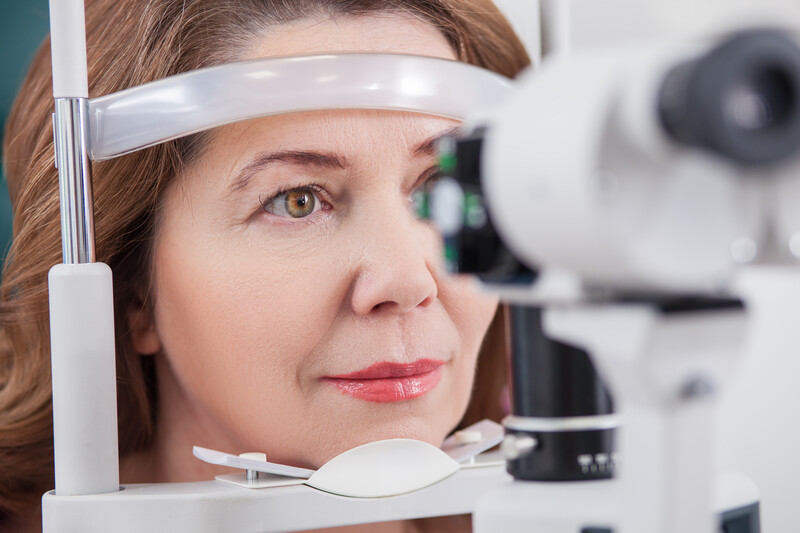Ophthalmic Exam – Frequency, Procedure & More

An Ophthalmic exam is a test of the eye and its function and includes tests to assess your vision, pupil size, and response to light. It also includes tests to assess the health of the front part of the eye, such as the cornea and lens. An ophthalmologist will use various tools such as a magnifying tool, dilating drops, or lenses to examine your eye. They may also take images during their examination with specialized equipment such as a slit lamp biomicroscope. This article brief will explore what an Ophthalmic Exam entails and what you can expect!
Ophthalmic Exam: What Is It?
An Ophthalmic exam is an evaluation of the eyes and their function. This test often includes vision, pupil size, and light sensitivity tests. It also includes checks of the cornea, lens, and front ends of the eye’s health, such as conjunctivitis or a detached retina. During an ophthalmic exam, an ophthalmologist will use various tools such as a magnifying tool, dilating drops, or lenses to examine your eye. Slit-lamp biomicroscopes are used to take photographs during their evaluation with specialist gear like a slit lamp.
What To Expect During An Eye Examination
The Ophthalmologist will ask you about your family and medical history, as well as the symptoms that caused you to seek an appointment. They will then perform a number of tests such as testing your vision by having you read letters on a chart or placing lenses in front of your eyes to measure your prescription. The Ophthalmologist will also assess the internal structures of the eye by shining a light into your eyes and performing other tests, such as checking your retina with a handheld ophthalmoscope or slit lamp. They will also check for signs of infection or inflammation within the eye. During this examination, they may ask you to look at different things while assessing your eye movement, pupil response, and ability to focus.
The Ophthalmologist will also assess the health of the outside part of your eyes by checking your eyelids for any abnormalities or lumps on the upper eyelid. A cotton bud may be used to touch around your eyelids in order to feel for lumps or inflammation. They will also perform a visual field check to make sure you are not missing any part of your peripheral vision.
The Ophthalmologist may also use equipment such as an OCT machine, which allows them to do more detailed tests of the retina and optic nerve head inside your eye. They may take images of different parts of the inside of your eyes using a technique called Slit Lamp Biomicroscopy, which involves looking into your eye at high magnification. In order to get a clear view of the different structures of the eye, they may use different types of light or lenses during this examination.
What You Should Do Before The Exam
There is nothing that you need to do in order to prepare for your eye exam. However, it is recommended that if possible you wear clothing without dangling scarves or jewelry around your neck on the day of your appointment, as these items may get caught by the ophthalmoscope during the examination. Wearing glasses that correct your vision will also be helpful as these can help you to see clearly during the examination.
Remember that when you go for your Ophthalmic exam, you should bring a form of identification such as your driver’s license or passport, as well as your insurance card. If you have had a previous eye examination, it is helpful to bring this information with you as it can help the Ophthalmologist to better understand your current eye health. You should also bring a list of any medications that you are taking, including over-the-counter and herbal remedies, as the Ophthalmologist may need to know about these. If you are wearing contact lenses, it is helpful to bring them with you so that the Ophthalmologist can check how they fit and whether they are causing any problems with your vision.
How You Feel After The Exam
After your eye exam, it is normal to feel some lightheadedness and discomfort due to the dilating drops used during your examination. You should rest for a few hours before driving home or operating machinery. It is also possible that your eyes will feel gritty or dry after the eye examination. If you are experiencing any significant discomfort it is recommended that you take paracetamol to relieve this.
How Often Should You Take Ophthalmic Exam?
It is generally recommended that adults have an eye exam every 2 years. However, if you are experiencing any problems with your vision or have other concerns, you should speak to your ophthalmologist about how frequently you should have an eye exam. Children generally have their first eye exam from 6 months to 5 years of age. Some children may need more frequent exams if they have a family history of eye problems, such as nearsightedness or astigmatism.
In order to keep your eyes healthy and functioning properly, it is important that you schedule regular eye exams. In this article, we’ve covered what an ophthalmic exam entails, as well as some of the things that you should do before going in for a checkup with your doctor. It is also important to remember how long after the appointment it becomes safe for you to drive or operate machinery. Hopefully, this article has helped to curb any concerns you may have had in terms of what to expect from a regular checkup with your doctor.